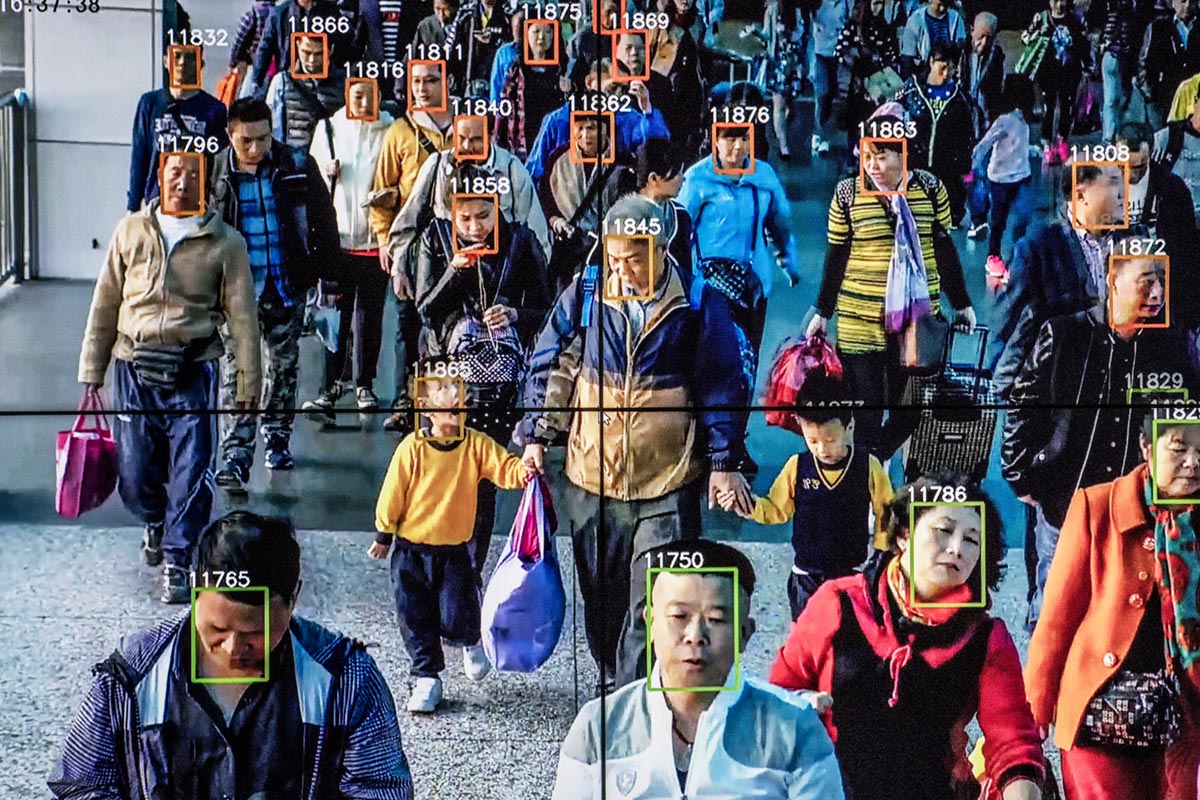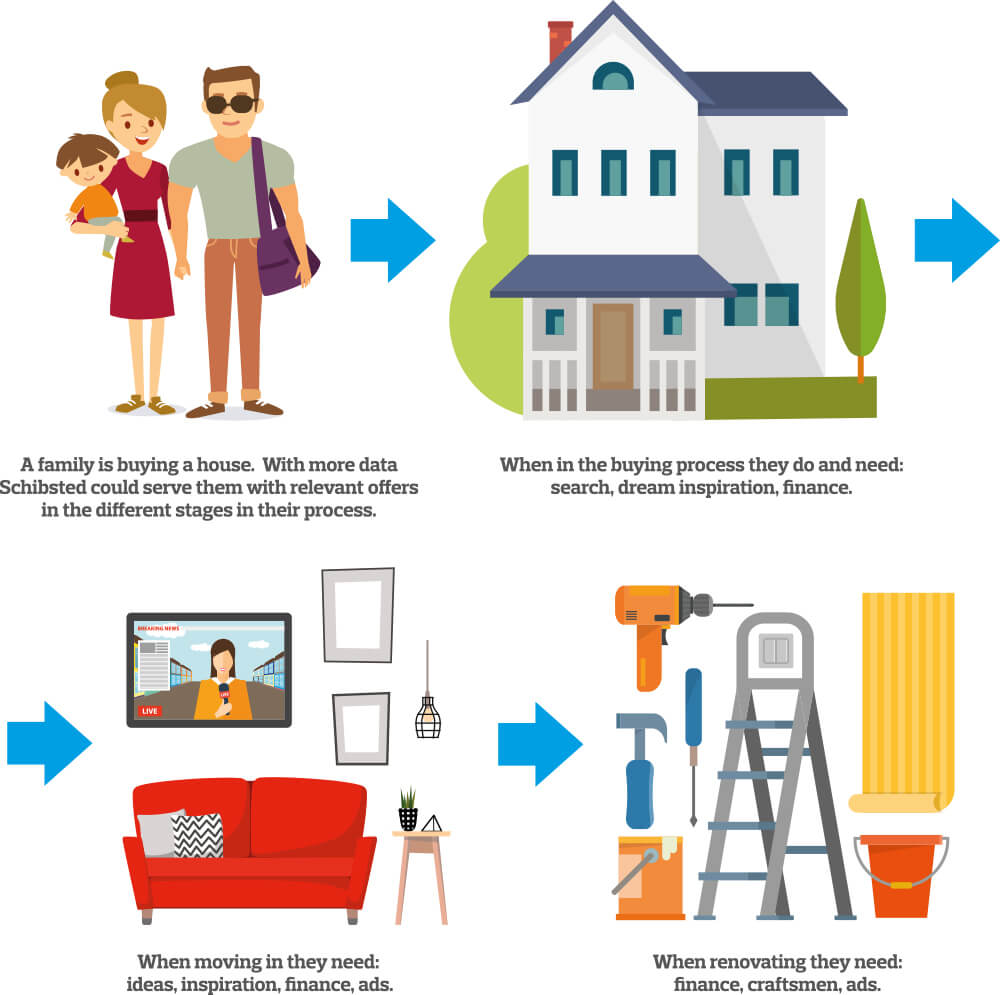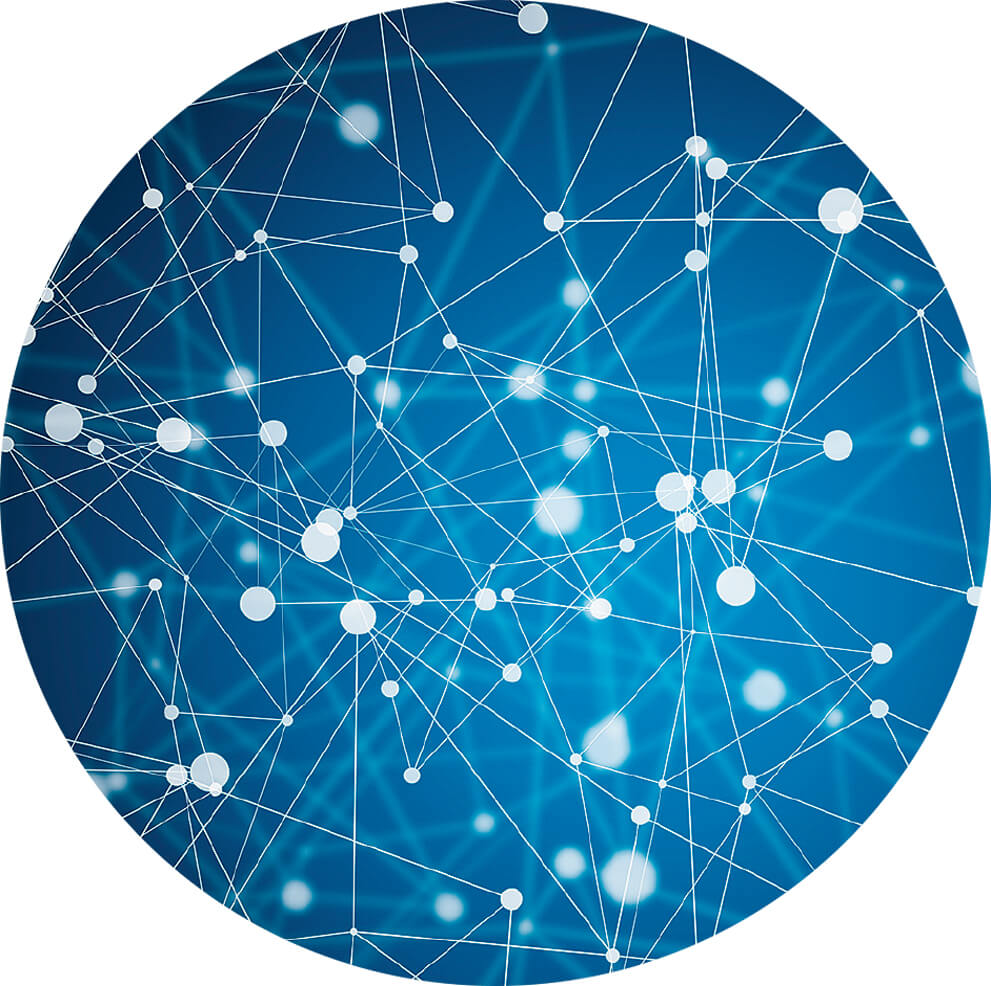What’s your score?

What’s your score?
China’s tech and AI development is impressive. But it might also lead to the largest population on Earth being completely controlled by a totalitarian state. The tool? A social score used to reward or punish people, based on data from digital platforms and surveillance cameras.
In today’s world there are few topics that really get the discussion going the way China does. Facts are mixed with personal experiences and random overheard stories. Eastern propaganda clashing with Western freedom of speech sparks both fear and curiosity on both ends. Lately the conversation has been focused on China’s AI and tech development. Media, futurists, think tanks, agencies and other global organizations have bombarded us with news and forecasts on how China is becoming the world’s leader in tech expansion and AI research. These areas are at the top of the Communist Party of China’s (CPC) agenda, and Chinese tech companies often work closely together with the government.
What kind of society will emerge?
Three of the nine biggest companies for AI development globally are Chinese; Baidu, Tencent and Alibaba. These three together are worth around one trillion US dollar and their investments have skyrocketed, aquiring 164 unicorns during last year. But what does it mean when a totalitarian state takes the lead in such a development – what kind of society will emerge? And how will this affect the Chinese people and the rest of the world?
The MIT technology review from 2017 claimed we should not fear this development happening in China.It also argued that the West should copy it. The word “copy” goes well with “made in China”, right? That is how the West has perceived China for a long time, as a factory lacking any respect for copyright or trademarks. But the tables have been turning. Only during the last decade in China, an art culture has also completely exploded; a new music scene has developed, and amazing design and creativity is flourishing. “Made in China” is now “Made by China”.
For decades, the West has been skeptical towards China. And China has, as a nation, been losing face collectively to the West for a long time. So imagine what it means when a report from MIT says that the West should copy China. Especially since Chinese people value personal honor and pride in everything – for a Chinese person to lose face in any way is the ultimate embarrassment. To them, the time has finally come to get the recognition they rightfully deserve. The West is suddenly in awe of China’s AI and tech development, eagerly trying to build collaboration bridges and establish knowledge exchange.
But there’s another side to the story – there’s a real risk that within a few years the largest population on Earth might be completely controlled by a totalitarian state, enabling one state ruler to change the behavior of each and every citizen with a single click.
A number ranks each person
The first time I heard of the social credit system was three years ago, when I still lived in China. With a massive smile and a gleam in her eye, my colleague Liwen snuck into my office and whispered, “I got a pay rise and my social credit has gone up!” I had to confess I had no idea what she was talking about and when she was done explaining I had chills all over. The system has been in place since 2014 and will be fully operational in 2020. The scheme is mandatory, and the exact methodology is – of course – a secret. The basics are: each citizen is given a social score. A number that ranks every individual, giving high or low scores based on data from different digital platforms on lifestyle behavior, status, friends and family etc. The score determines if you are going to be rewarded or punished. The rewards for a high credit score are many; favorable loans for housing, streamlined visa procedures for traveling abroad, even suggestions of high-class dating apps should your marriage not last.
The sword of Damocles
The punishments are harsh. A low score means difficulties getting train or flight tickets, slower internet speed (we refer to the web in China as “Chinternet – almost like having internet”, a closed network surrounded by the Great Fire Wall of China. You can imagine, it is not great to begin with), inability for your child to get into good schools, obstacles when looking for a new job, not being able to sign lease contracts and much more. These rewards and punishments are just the official ones.
The social credit system aims to “purify society” by letting “good people” move about without obstruction and leave a constant threat hanging like the sword of Damocles over the “bad ones”.
I recently caught up with a friend who lives in China. He occasionally goes out drinking with the local district police officers and at the end of a late night the (highly inebriated) chief of police picked up his phone, and took a blurry picture of a random patron next to them. Then he ran a search and showed the result to my friend where the man’s name and additional information instantly came up. “I can find anyone on this”, the chief boasted.
The CPC’s goal is to build a database over the entire population, enabling recognition of a citizen within seconds. The current surveillance network in China consists of about 200 million cameras all over the country and will be extended to 300-600 million cameras in 2020 (more exact numbers have not been made official). China’s development within AI and tech gives anyone with security clearance the possibility to locate and get background info on any given citizen within seconds.
It does not stop at facial or voice recognition, the latest development within surveillance tech is said to explore the possibility of interpreting body language to foresee felonies that are about to happen – an eerie realization of the plot from the 2002 movie “Minority Report” in which people are prematurely sentenced for a crime they have yet to commit. Also – when China says it is “exploring possibilities” it basically means it is up and running already.
So, why do the people of China agree to all this? The answer is almost too simple. They value safety higher than privacy. Research shows that when choosing a work place the young generation of China wants safety and secure employment. The one-child policy led to a generation referred to as the “Little Emperors”, which in short is a whole generation growing up with parents with an increased purchasing power and four grandparents having the one child as their main priority. The result is a highly spoilt generation used to being taken care of, with a family of elders wanting nothing but security and safety for their golden child.
The CPC is very skilled at making sure the citizens know that everything they do aims to ensure people’s safety. During Xi Jinping’s speech at the 2018 National People’s Congress in Beijing, he said that the CPC will keep absolute leadership over the armed forces with the goal of building a strong army. At an Interpol conference recently he stated that “Chinese society is stable and orderly, people happily live and work in peace,” and that “more and more people believe China is one of the world’s safest countries”.
Aim for increased collaboration
So, when the second largest economy in the world has the biggest population on Earth under its thumb, what does that mean for the global balance? Perhaps the West should be a bit less in awe of China’s technology development and instead of trying to copy it, find ways where AI won’t lead to total population control, but rather increased collaboration and less distance between countries and the people of the world. Because rest assured – where the West will be in another fifty years of tech development is where China is going to be in ten.
This is Happening at Schibsted

This is Happening at Schibsted
With both Google Assistant and Alexa improving and becoming available in more languages, the interest for voice as a user interface is starting to grow.
Voice – VG
With both Google Assistant and Alexa improving and becoming available in more languages, the interest for voice as a user interface is starting to grow. Schibsted’s newspaper VG created one of the first actions (skill/app) for Google Assistant in Norway and has been experimenting with text-to-speech in order to give Norwegian listeners live news updates and sports results. Because voice is uncharted territory, two of the key focus areas has been user research and getting MVPs in front of users. People are excited about AR – but also get very impatient if the technology fails. Whether it’s to reach out at different hours or to people who are old or young or otherwise unable to use phones or computers, voice represents a very interesting opportunity.
AR – Finn Shopping
While open source software development kits by Apple and Google, ARcore and ARkit, revolutionized the AR industry last year, the final push for mainstream adoption is anticipated to come from AR on the web. With the iOS 12 software update from Apple this fall, a feature called AR QuickLook was launched to all iPhone and iPad devices. This makes it possible to view 3D objects in AR in Safari, with the tap of an icon and with no extra app installation needed. Finn Shopping is the first Schibsted company to try the new feature. Working with the Platform and Technology Trends team, they have partnered with an external firm for 3D model content creation and are now launching AR QuickLook in chosen categories on the Finn website. AR QuickLook will help users make better buying decisions, allowing them to view new furniture items in the context of their own home, comparing sizes, colors and textures in a realistic way.
Voice – Aftonbladet
Aftonbladet Daily is Sweden’s first daily news podcast. It’s available for smart speakers using Google home and Amazon Alexa. The launch is part of a larger push into voice and audio by the new department Aftonbladet Labs. The podcast is produced in collaboration with podcast platform Acast. Aftonbladet recently released a service for Google Assistant where users can get the latest news read to them and also access the title’s full catalog of podcasts. In Sweden news aggregator Omni is also launching a news pod, in Norway Finn Travel has built a functioning flight search during a two-day hackathon and in France Leboncoin has been experimenting with text-to-speech in its jobs vertical.
Trends in Brief

Trends in Brief
It’s called persuasive design, and almost all big tech companies use it. By hiring psychologists, mental health professionals and behavioral science experts, companies can create products that are addictive and that actually manipulate our behavior.
The ethics of tech design
It’s called persuasive design, and almost all big tech companies use it. By hiring psychologists, mental health professionals and behavioral science experts, companies can create products that are addictive and that actually manipulate our behavior. The concept of persuasive design is nothing new, some researchers claim it all started with Socrates’ storytelling techniques (there’s always a Greek at the beginning, right?). However, the manipulative design has now moved far away from storytelling, and into the thing modern humans use the most; our beloved tech. A group of American psychologists is protesting against these “unethical and dangerous” practices, pointing out that these “hidden manipulation techniques” especially affect children, and the tech companies know this.
Tech’s energy problem
Listen, I know we all love our tech, but it comes with a very heavy energy price tag. Climate researchers are saying we have to cut our emissions in half by 2030, so that price tag is a problem. Many techies believe we could innovate ourselves out of this mess. However, we have been trying that for years, and even though electrical cars have become the hottest status symbol (thanks Musk!), 2018 will still be a record year for carbon dioxide emissions. Also, all new tech that excites us is not as environmentally friendly as clean cars. Mining cryptocurrencies alone now makes up one percent of the world’s total energy consumption. So if we want to innovate our way out of this, we need to focus on the innovation that matters before forcing everyone to use Bitcoin.
What comes after China?
Investors who entered the Chinese startup scene early have made fortunes on the country’s economic boom. Now, the country’s startup world is maturing and eager investors are looking for their new cash cows. Many investors believe sub-Saharan Africa is next. The region only has three unicorns so far, but due to expected high growth in population, internet penetration (currently under ten percent in most countries), and resources, the market could grow very fast. Others believe Latin America is the next unicorn machine and give Argentina as an example. The country has had a tough couple of years, but the “chronically dysfunctional economy” (a phrase used by Argentina’s minister of technology, ouch!) has actually helped startups flourish. High inflation and changing rules have forced them to be crafty and adapt a fighting spirit.
Ellen Montén
Time to say bye bye

Time to say bye bye
Smartphone sales peaked in 2017, while voice and AR are closing the gap between devices and our senses. Perhaps our addiction to screens will end sooner than we could imagine.
Imagine waking up on a rainy Thursday. Enjoying the comfort of your warm bed, you are somewhat dreading the thought of stepping onto the cold floor to get into the shower. “If you get up now you’ll have time for a nice shower before your coffee gets cold”.
It could have been your own thoughts, the voice inside your head, but it is your digital assistant speaking. It’s still dark as you slowly get out of bed.
“Lights to ten percent”, you say, and as you make your way to the bathroom the voice follows you into the shower, gives you the morning news update and tells you to bring an umbrella to work because it might rain on your way back home. Your first meeting, which you had totally forgotten about, has been moved to a different building.
As you head over to the kitchen you catch the smell of fresh coffee and see it waiting for you in your favorite cup on the countertop. The fridge tells you it has ordered more tomatoes, and that you have a couple of eggs left if you want them for breakfast. While cooking the eggs, your eyes are resting on the countertop which is now displaying the apartments that have appeared in your saved search overnight. My next apartment should have heated bedroom floors, you’re thinking, that would make it so much easier to get up in the morning. With a simple gesture you swipe through the pictures, read the description, and the gentle voice asks if you would like to be reminded about the viewing on Sunday.
“There are some delays so you should leave in about ten minutes if you don’t want to be late. Oh, and don’t forget that umbrella.”
We are ready for new interfaces
This might sound like fiction, but digital experiences like the ones described above aren’t taking place in some far off, imaginary future. Many are happening right now, thanks to emerging technologies that are creating deeper connections between our physical and digital worlds. A shift is underway where digital experiences will no longer be confined to phones, laptops, desktops, and TV screens, but surrounding us in more subtle yet immersive ways. Blending the digital and real worlds, augmented reality (AR) and voice are spearheading this movement. At the same time there are several signs indicating that we are ready for new interfaces. Smartphone sales and usage peaked in 2017 and are both starting to flatten out. We observe signals indicating that people want to spend less time staring at screens. Considering that the average person spends around 3.5 hours on their phone each day, this is probably good news. Research also shows that phone overuse is making us unhappy, alters our memory, and some even classify internet addiction as a new mental disorder.
Even the big tech players are listening to these signs and making some efforts to reduce the consumption of unimportant content. Facebook recently changed its news feed algorithm with the aim of displaying more personal content and fewer adverts and viral videos, introducing the term “time well spent”. And with the new iOS 12 update, iPhones will have a built-in screen time tool, with which users can set limits to their phone usage.
But more efficient in curbing our screen addiction is the rise of new user interfaces that naturally draw our attention away from our phones. Voice and augmented reality are often referred to as ambient user interfaces because they appear in our immediate environment but are invisible unless called upon or contextually relevant. Therefore, when we lift our eyes off the screen, we can interact with new interfaces in a manner that lets us be more present in life.
However, while less screen time is a likely consequence, the implications of AR and voice are so much greater. AR and voice are also amazing storytelling mediums, both able to efficiently and effectively convey information. And while many draw a parallel between voice assistants and radio, the key difference is the interactive dialogues one can have with a voice assistant.
Instead of listening to a linear stream of news, users can now choose which topics to skip or follow more closely. Fictional stories can take a new turn of events by the command of the user. Instead of pressing buttons, we can control their environment by speaking to machines in the same way we speak to each other. Since we already know how to do this, voice as a user interface removes a lot of traditional barriers to technology adoption and is suitable for both old and young audiences. AR represents the next big innovation in how we produce and consume content, to which pictures and motion pictures were the preceding ones. Whether it’s for news stories, fictional movies or product pictures on a website, most agree that “a picture is worth a thousand words”. But through augmented reality dramatic news can be viewed safely in your own home. Imagine experiencing the Tham Luang cave – the cave in Thailand where the 12 boys were trapped this summer – at a scale and level of detail that far surpass that of text and image. AR gives us the ability to teleport someone into an environment or situation that would otherwise be impossible for them to experience. This brings about a whole new world of opportunity, not only for storytelling or commerce but also for entertainment and medical purposes. It turns out that a good way to cure arachnophobia is to pet a virtual creepy crawler because the brain can’t really tell the difference!
“Instead of listening to a linear stream of news, users can now choose which topics to skip or follow.”
Spending less time on our phones is not going to be easy and it will not happen overnight. Virtually all the products we interact with on our phones are built for instant gratification and addiction, releasing the same hormones as drugs and sugar when in use. We stay locked in and logged on to these apps because we fear that if we stop using them, we might miss something important in our (however distant) friends’ lives.
There is no guarantee that future AR and voice applications won’t build upon the same addictive behaviors as our current smartphone apps. But for designers and product developers, these new interfaces provide a blank slate – an exciting opportunity to experiment but also to define what our future user experiences should look like. And hopefully, with experience from today’s screen addiction, the new technology will be designed to filter out the noise for us and be optimized around our needs.
We might not be ready or able to completely ditch our smartphones just yet, but a combination of AR and voice commands will soon be the primary interface for anything spontaneous. This means that technology could help you be more present in the real world, while elegantly serving you with information, assistance and immersive experiences on demand.
This is happening in Schibsted:
Voice – VG
With both Google Assistant and Alexa improving and becoming available in more languages, the interest for voice as a user interface is starting to grow. Schibsted’s newspaper VG created one of the first actions (skill/app) for Google Assistant in Norway and has been experimenting with text-to-speech in order to give Norwegian listeners live news updates and sports results. Because voice is uncharted territory, two of the key focus areas has been user research and getting MVPs in front of users. People are excited about AR – but also get very impatient if the technology fails. Whether it’s to reach out at different hours or to people who are old or young or otherwise unable to use phones or computers, voice represents a very interesting opportunity.
AR – Finn Shopping
While open source software development kits by Apple and Google, ARcore and ARkit, revolutionized the AR industry last year, the final push for mainstream adoption is anticipated to come from AR on the web. With the iOS 12 software update from Apple this fall, a feature called AR QuickLook was launched to all iPhone and iPad devices. This makes it possible to view 3D objects in AR in Safari, with the tap of an icon and with no extra app installation needed. Finn Shopping is the first Schibsted company to try the new feature. Working with the Platform and Technology Trends team, they have partnered with an external firm for 3D model content creation and are now launching AR QuickLook in chosen categories on the Finn website. AR QuickLook will help users make better buying decisions, allowing them to view new furniture items in the context of their own home, comparing sizes, colors and textures in a realistic way.
Voice – Aftonbladet
Aftonbladet Daily is Sweden’s first daily news podcast. It’s available for smart speakers using Google home and Amazon Alexa. The launch is part of a larger push into voice and audio by the new department Aftonbladet Labs. The podcast is produced in collaboration with podcast platform Acast. Aftonbladet recently released a service for Google Assistant where users can get the latest news read to them and also access the title’s full catalog of podcasts. In Sweden news aggregator Omni is also launching a news pod, in Norway Finn Travel has built a functioning flight search during a two-day hackathon and in France Leboncoin has been experimenting with text-to-speech in its jobs vertical.
Meet our people

Meet our people
Optimizing cooperation, creating a data driven organization, leading the UX team – meet three Schibsted people with three different roles.
“To keep learning is what drives me”
In Mexico, Segundamano has started a journey to become truly data driven. In charge of this effort is Paloma González Martínez, who joined Schibsted a year ago. “Providing value to our users is our most important goal. We want to ‘wow’ them and we’re using insights from data to achieve this”. In the data world “liquidity” has become a buzzword; it basically means to make the user’s experience smooth and efficient, and to remove pain points and obstacles to transactions. In a marketplace this means easily finding what you need and going through a safe and clear process. Improving this liquidity is Paloma’s main focus.
The first step has been to define what will improve the user experience and to set up some metrics, based on data insights – and to create action plans. “Each Monday we look back on the data from the last four weeks. If we see that a category is going down we use all our efforts to analyze what is happening. Then we pass our findings on to our marketing and product teams, so they can take actions to improve things.” Segundamano has taken the lead on this in Latin America, sharing experience and knowledge. And at the same time the central Schibsted team is helping out when resources are a bit short when it comes to data science. “To keep learning is what drives me, and to help other teams. I also believe that we can be much more data driven, and that would improve all of our products a lot.”

Years in Schibsted: 1. I look forward to: Keep finding insights from data.
Finding opportunities to cooporate
Mårten Gustafson’s job is to help his tech colleagues to collaborate, and to identify if they are working on the same problem in different teams. He is working across the media organization, with tech infrastructure, best practice and tools – to help the organization use its resources in the best way. Getting an overview of what the different teams are doing takes a lot of communication. “I’m hanging around in many forums, following conversations. And an important part of my work is to build networks for knowledge sharing across the organization.” Mårten is a systematic guy, and sometimes when he sends out another spreadsheet some people may heave a weary sigh. “But lining things up in rows and columns can make it easier to ‘see’ everyone else working on similar issues and realize that there’s an opportunity for cooperation.”

Years in Schibsted: 8. I look forward to: The future of work and the work of the future.
The next generation of publishing
Fanny Chays is product manager in Schibsted’s NextGen Media Products. This is a team that is working on defining the next generation of publishing products. “We do that by obsessing on understanding the user problems and finding the right product and market fits”, she explains. Products like Peil, that offers an effortless way to keep up with news, Omni, a curated news service that gathers perspectives from all media in one place, and The Daily, a news service for large corporations are part of their portfolio. “What makes NextGen really interesting is that it allows us to take a step back and look at the world we operate in, at trends, future opportunities and challenges, and develop a vision for the future. And in the end, it might turn into a product.”

Years in Schibsted: 4. I look forward to: Continuing to develop new products that solve important problems.
Visualizing the ultimate experience
In all product development, user experience is top priority in Schibsted. Paula Mariani leads the UX team that is working across all of Schibsted’s marketplaces. “My main focus is to make sure that we always have the users and their needs top of mind”, Paula explains. To achieve this, her team is working on a project called “the perfect matchmaking”, where they want to realize a vision of the ultimate experience. They are also creating a framework that will help them understand how well they’re doing. But what she likes most about her job is getting to know different UX teams across Schibsted. “We have become a huge community that shares best practice and I love spending time with my colleagues, and learning new things”.

Years in Schibsted: 3. I look forward to: Delivering even better products for our users.
Trends in tech

Trends in tech
Augmented reality has started to pick up speed with new tools and autonomous cars have gone from future technology to early adoption. This is a quick guide to some more tech trends.
Virtual furniture is only the beginning
The last ten years have evolved around the shift from big screens (desktops) to smaller screens (mobile). We are currently in the early stages of a journey beyond screens and into more immersive user experiences. Augmented reality (AR) is in the driver’s seat for this blurring of boundaries between the digital and physical world.
Simply stated, AR adds computer-generated images on top of the real world, either through a dedicated device (e.g. Google Glass) or a screen device such as your mobile phone. It has been around for years, but recently AR has started to pick up speed due to two key improvements. First, processing power and camera improvements are making mobile phones great AR tools. They also happen to be the easiest accessible digital layer to place between people and the real world. Second, recent advancements in artificial intelligence and image recognition capabilities have made machines much better at understanding their environment.
The most famous and widely adopted use cases of AR are Pokémon Go and the Snapchat filters that adapt to your face. These applications are quite simple and only have a basic understanding of their environment, but were still expensive and time-consuming to build. That changed this summer with the release of AR developer kits from Apple and Google. Think of these kits as a bag full of “Lego bricks” in different shapes and colors that allow you to start building great stuff in no time. More than 500 million iOS and Android devices can now use AR apps built with these tool kits.
Experiments flourish, with one of the most remarkable being “Ikea Place”. It allows customers to test how Ikea products would look in their home (size, color etc.) We know from experience that strong visuals drive buying engagement and this will no doubt be a game changer in online retail. It took Ikea only seven weeks to build the app using these new developer kits.
AR as an interface is in its infancy, and we can expect to see a lot more use cases emerge in the coming months and years. And, will we even need a phone in the future, when we could have a digital contact lens between ourselves and the world?
/Marius Olsen, VP Product Strategy Office.
Blockchain popularity is surging
At the start of 2016 the total market value of publically tradable (most of them are) blockchains was seven billion USD. In Q3 2017 that figure is fluctuating around 150 billion dollars – that is 20 percent of Apple’s total valuation. The space is seeing a surge in value as the technology is in a positive spiral with mainstream attention and because more and more people are experimenting (and speculating) on what “programmable money” could do. Blockchain is the technology behind Bitcoin, which can create trust between two unknown parties on the internet, without a central third party. This is an innovation with massive implications; blockchains will do to trust what the Internet did to information.
/Fredrik Haga, Investment Manager.
React while campaigns are running
Programmatic advertising is taking a big step forward, using data to understand user behavior. The Advertising strategic accounts team in Schibsted Spain is creating new attribution models that are taking this into account. Today digital campaigns are measured based on last post, clicks and impressions. But with more user data and new models, you can now define, identify and cluster much more specific user groups and reach them by programmatic buying. It also means that you can measure what perception and affinity users have towards a product or service, and their buying predisposition. This in turn, allows a much more efficient monitoring of behavior changes and reactions during the campaigns.
/Future Report
Clear road ahead for robot cars
Since last year’s Future Report, autonomous vehicles have gone from future technology to early adoption. Several real world tests are ongoing from the likes of Uber, Didi and Volvo.
Although the technology is increasingly likely to mature in time for general availability in 2021, challenges remain, such as regulation and insurance. New, behavioral issues are also being raised: Will self-driving cars clog roads instead of reducing traffic? That might be the case if cost conscious car owners let cars cruise the free roads instead of paying for parking. But, if there is a will there is a way, even for robo cars. Governments are starting to move, such as when the UK announced they aim “to be at the forefront”.
/Dan Ouchterlony, Investment Manager
Be prepared for the post privacy era

Be prepared for the post privacy era
The realization that the digital footprints we’re leaving behind are telling the story of our lives and our personalities has started to sink in.
But how does this really work, behind the scenes? Michal Kosinski, psychologist and data scientist at Stanford Graduate School of Business, knows this better than most. If you recognize his name, you might have heard it in connection with the Trump election. Kosinski’s research warned of the possibility of using data to influence voters in political campaigns. In the study conducted in 2013 Kosinski tried to see whether it’s possible to reveal people’s intimate traits just based on their seemingly non-informative footprints, like songs you listen to and your Facebook likes. And the answer is yes.
“Facebook probably knows more about you, than you do yourself”
“AI can be used to predict future behavior and help us understand humans a bit better. But one of the potentially negative implications is that it can be used to manipulate people, to convince them to do things that they otherwise wouldn’t have liked doing,” he explains. “Facebook probably knows more about you, than you do yourself. In the work that I published back in 2013 I said – look, this is possible.”
This is possible because a lot more than we actually publish on Facebook is recorded. Like your whereabouts, the messages you wrote but never sent, a friend that is stalking you, your spouse’s contacts, to mention some. “Maybe you never reported your political view on Facebook, but from your different actions and connections, Facebook will still know and tag your profile. Their reason is selling ads.” A lot of other industries have the same approach. Mastercard and Visa no longer define themselves as financial companies, but as customer insights companies.
“I’m a psychologist, I’m interested in human behavior and how we apply big data generated by humans to predict their future behavior and explain their psychological traits. But the very same models can be used to predict the stock market or the price of raw material or tech-hacking. There are consequences for media, for politics, for democratic systems, health care, you name it.” It’s AI:s that are putting the puzzle together. From all the digital traces we leave behind, they’re able to reveal patterns.
As humans we are only able to process a certain amount of information, and we don’t see all those links connecting characteristics and people. But the connections are there, and computers are excelling at putting them together, because they can tag patterns and they can aggregate those patterns. The very same predictions that can be made from digital footprints from Facebook, from language, websites and credit cards, for all those places where we interact digitally, can now also be made just on the base of your facial image.
“As humans we are predicting a broad range of traits from faces. From a fraction of a second of exposure, we can very accurately interpret an emotion. We have millions of years of training on this – because it’s so crucial for surviving. Being able to spot if someone is angry or very happy will determine if you should run away or hang around. We really don’t know how it works, basically your brain just does it.”
It turns out your face holds a lot of information. Gender of course, but there are also genetic factors such as the trace of your parents. Our hair reveals information on hormones, the tone of our skin, even environmental and cultural factors can be traced in our faces. And after just a few years of trying, computers are now great at predicting gender and age. And they have even become better than humans at the very human task of predicting people’s emotions. The problem is that we don’t really understand how this happens either.
“The mathematical foundation of the models is really simple; it’s basically a long equation, but with millions of coefficients, far too many for the human brain to comprehend. But the computers are able to spot those tiny details that humans fail to see, and add them up.”
In a recent study Kosinski also claims that AI now can detect sexual preferences, with a 91 percent accuracy. This has roared debate and been questioned, but still, there is no doubt AI already has abilities we could never imagine just a few years ago.
“When I’m talking about this in the western free market, people think of how some creepy marketing or politician will try to take advantage of us. But when you reflect on people living in countries that are not so free and open-minded, where homosexuality is punished by death, you realize that this is a very serious issue.”
Michal Kosinski is certain that we have entered the post privacy era, and there’s no turning back. And his message is that we need to think about how we want this to work out. “The sooner we start thinking about how to cope, the safer and more hospitable the post privacy era will be.”
20 years of online happiness
Infojobs is soon turning 20. Maturing in a Spain reeling from the financial crisis, the company morphed into something more than just digital job hunting.
1,205,731 – that was the number of job contracts signed using the Infojobs platform in Spain in 2016. We call this “alegrias” or “happy moments”, because we know that finding a job is much more than signing a contract. It’s a key moment in our lives, as it helps us care for our families, realize our dreams, grow as humans and feel that we are a part of society. Finding a job is also the excitement of preparing for an interview, the joy of getting a call that says you’ve been chosen and the pride when you have succeeded. It’s the peace of mind when knowing that when the moment comes, you’ll be able to take on a new professional challenge.
"We help society and it makes us proud"
This is what we’ve been doing at Infojobs for the last 20 years: helping people find a new professional challenge and experience these feelings. At Infojobs, we are here to help people to find the best jobs and help companies find the best talents. We help society and it makes us proud.
Our journey began in 1998, when Infojobs recognized the need for “dotcom” companies to find professionals within technology. This was anothera era, when the Internet was an unknown world for many people and job ads were published in printed papers. Infojobs brought the ads online and the success was immediate. Soon enough companies in other sectors and professionals saw the efficiency and followed. At this point, like most things online, the ads were free, in an area where companies were used to paying. It sometimes caused a bit of confusion, when costumers were wondering why they didn’t have to pay. For Infojobs it was also an era with some challenges, being at the forefront as a digital service, at a time when the number of homes and companies with internet was still very limited.
Happiness requires finances
But in the end Infojobs made the transition for job ads from paper to digital possible. In those early years we even worked with huge companies who came to Spain with multi-million euro budgets. We became leaders and had won the loyalty of our customers. These solid foundations made it possible for us to start charging for ads in 2000, putting a price on the value that we were adding to the market, as both we and the market were growing. And that’s crucial. To bring happiness, in the form of connecting people with jobs, requires solid financial health and one of the most exciting things was that customers who had been with us from the beginning joined us on this journey.
In 2009 the financial crisis hit Europe and Spain with devastating strength. At its worst more than 25 percent of the Spanish were unemployed, and a lot of people were having a difficult time as they couldn’t pay for their homes and bills or support their families. These were hard times for all of Spain. For Infojobs its very core idea was affected, as the number of job vacancies dropped sharply. But it also led to a deeper social engagement.
We started to ask ourselves how we could support some of all the people without a job even more. Since then we have kept supporting job seekers in different ways. Infojobs supports and participates in face-to-face events, offering free CV-workshops, interview coaching, tips on how to use the job platforms properly in order to find a job or how to take advantage of personal branding and social media when looking for a job. All of this is also available on our blog, Orientación Laboral, and we offer free online webinars. Infojobs is not only a place where you can find a job, it’s also a partner that gives you advice and information to improve your professional career.
Infojobs was born in the early web era and has now become a multi-channel platform. In November 2016, we reached the milestone of becoming Spain’s first employment app to have 1 million individual active users in a single month. This number is four times higher than any other employment services in the Spanish market, making us the leaders in the pocket-size world. But we haven’t stopped yet. With new players offering new services Infojobs has to constantly evolve to stay relevant. There is still opportunities for growth in the market, as more than 100,000 companies and over two million job-seekers are still not using Infojobs.
It’s AI or DIE
There’s also room for improvement. We can get even stronger by expanding our position along the recruiting chain, going down towards the transaction and not only limit ourselves to search and audience. And we will always keep listening to the companies that trust us and to the professionals who use us, locating their needs and trying new features and services. We also recognize the importance of tech and artificial intelligence in this – it’s AI or die.
This is where we are heading as Infojobs is getting closer to its 20th anniversary. Today seven out of ten online job opportunities can be found on Infojobs, 70,000 companies in Spain trust Infojobs every year to find talented employees. 60 percent of people looking for work online do so using Infojobs. And, what’s more, Infojobs works: one out of three people who apply find a new job. Beyond the numbers, the best and most satisfying proof of our success are the messages that we recieve from people who have found a new job and a new start in life. Or from the companies that have found the talents they need. These “alegrias” are the reason why we want to keep evolving.
Three ways of plugging the gender gap

Three ways of plugging the gender gap
During 2017, two events put gender diversity at the top of corporate agendas around the world. At Uber, a sexist culture was revealed and Google fired an employee who had published a controversial memo, criticizing the company’s equality policies. The fact that two of the world’s leading tech companies had to tackle these issues head-on shows the need to turn gender equality ‘talk’ into action across the industry.
To help make this happen, we have summarized three ways in which companies can take positive steps towards building a more gender-diverse workplace. But before we get to the solutions, let’s take a closer look at the problem. Roughly half of the world’s population is female, but you wouldn’t know it by looking at the technology sector. Recent public diversity reports reveal a 70/30 male/female split in leadership. It doesn’t end there; in Silicon Valley women only hold an 11 percent of executive positions, and trust us, it’s not because they aren’t built for the job.
The gender gap starts in school
In fact, the reasons for this are complex and many-fold. The gender gap in technology starts at an early age and carries on through every stage of women’s lives. When Youtube CEO Susan Wojcicki’s 10-year old daughter told her that “liking computers was super lame,” she was shocked – but, reflecting over the comment, admitted she shouldn’t have been surprised.
“Today this pattern is playing out with girls throughout America,” she said at a women-in-tech event. “They are led to think that tech is insular and antisocial. And they are never given a chance to correct those perceptions.”
“Liking computers was super lame”
On the other hand, double standards and unconscious bias towards gender are often so embedded in our culture – we often don’t recognize when we’re reinforcing them. To address this, companies have started to include diversity quotas into their HR policies. However, the solution doesn’t just lie in hiring our way out of a lack of gender diversity – it’s also about addressing low retention rates. According to a Reuters study 56 percent of women leave their jobs at the highlight of their career, which is twice the exit rate for men.
High returns on diversity
Despite these challenges, many companies are capitalizing on the direct benefits of fostering a diverse work environment. Consulting firms Catalyst and McKinsey each studied the financial performance of major organizations according to gender diversity at senior levels. Both reported that high returns on equity correlate with greater diversity. In essence, companies with women board directors and women in senior leadership are 15 percent more likely to outperform others. There are other obvious benefits of having women in tech at all levels – half of the tech users out there are women. Without a doubt, they have some needs that other women can detect and turn into business opportunities.
The good news is that there are things we can do at our workplaces today to help construct a sustainable ecosystem that will impulse gender equality practices in the long run. So, for those of you looking to push forward the diversity agenda in your own organizations, here is a list of industry best practices that can serve as inspiration:
Coaching and soft skill development
Recognizing the unconscious differences and bias between men and women in the workplace and providing training open to all to help create equality in the organization is essential. Focus on providing coaching and development for “non-technical” soft skills such as communication, networking, negotiation, emotional intelligence and confidence are important factors to ensure that women are able to progress in their careers.
Women Network and mentorship programs
Creating a network for women by women aimed at building networking opportunities, mentorship relationships and pushing general career development is a strategy that over 30 global companies have adopted to achieve higher diversity levels across all levels of their organization (see Google, Facebook, or Ebay).
Data-driven approach to diversity
What gets measured gets managed. Measuring and understanding diversity within your organization will help you draw a heat map of topics to address and needs to focus on. It’s wrong to assume that focusing on the current percentages is enough; the most powerful metric is retention over time.
One ID to rule them all

One ID to rule them all
What do 90 percent of all Swedes have in common? They use Bank-ID. In no time, a unified digital identification layer has become a daily savior. But sometimes trust comes at a high cost.
Large consumer banks have rightly been criticized for lackluster digital innovation and poor customer service. Fintech startups are running in circles around these dinosaurs and users are leaving in droves. Or are they? This is a story of one of the exceptions. This is a story of a revolution in accessibility and usability and huge risks. A story of how Sweden’s consumer bank oligopoly (Swedbank, SEB, Handelsbanken and Nordea) handed the keys to the kingdom to startup competitors, a story of radical empowerment, and a story of how a leapfrog in innovation could also turn out to be a technological dead-end on par with the French Minitel system.
Ladies and gentlemen, fasten your seat belts, this is the blockbuster story of Mobile Bank-ID. The story of WHAT?
As easy as touching your phone
Mobile Bank-ID. A secure digital identification, used by 90 percent of Swedes to open bank accounts, sign agreements, transfer money, take out loans and do tax returns. It’s as easy as holding your thumb to your Iphone. Gone are the scanned passport copies, logins, Pa$5w0rDs, confirmation emails, security questions and verification codes. No matter what the service. Even dating? Yep. The first thing many Swedes do when they buy a new phone? Yep, they log into their banks and install the mobile Bank-ID app on their phones. Most likely the service has wider national distribution than Facebook.
“What does it mean when an entire population is digitally identifiable?”
As a society we have adopted an immensely important and empowering technology, equal to GPS or credit cards. With little or no public debate as to the risks and issues. It just happened, with the consent and active support of the government. You see, we Swedes have no to little skepticism of centralization and we jumped like lemmings. We have put our digital IDs, our digital personas, squarely in the hands of banks and a small private company going by the name of “Finansiell ID-Teknik BID AB”.
Well, what do you expect in a country where every citizen is sampled for blood at birth, and where people (on average) like that fact that booze is only sold in state-run monopoly stores? As a matter of fact we love our Bank-IDs – 2.5 billion times yearly and growing rapidly to be precise. At the moment Bank-ID is used on average about once per day per Swede all year around. How did Sweden create a unified digital identification layer, and what does it mean when an entire population is digitally identifiable? It has enabled citizens digitally and made business easier, but how did we come to trust it so fast? Is it because practicality rules, or because Swedes blindly trust authorities and banks? Truth is, it’s really not that safe.
A logical evolution
Let’s start at the beginning. What is identification? Back when societies were small, and technology simpler than today, you knew if Sam was Sam by the looks of his face. Sam got into his bank vault just by showing up at the bank. The passport was invented in the 1400s by the British, but before World War I the use of identification documents was uncommon. As travel increased in the early 1900s the use of identification documents increased as well, among other things to combat espionage, and has been increasing ever since. Today, the banking system has been walled off by Government’s identification demands to stem money laundering. Banks are required by law to accurately identify each and every customer to understand where and why money enters the system. Normally, this identification is carried out by showing your ID card or passport. As banks have come to store most of our valuables in carefully protected digital bank accounts instead of physical bank vaults, accessing these with digital identification is a logical evolution. And so we started using passwords, PIN codes and other digital IDs.
Back in the present. In Sweden, as a market and an ecosystem we have solved a slew of challenges at once. Digital access to government services is solved. Digital signatures of documents is solved. Distribution of new fintech services is solved. PSD2 is solved. Instant payments is solved. From the eyes of fintech entrepreneurs this is heaven. Onboarding new users to a complex financial service is an astonishingly simple and powerful experience.
Surely this is socialist state Sweden forcing technology on its citizens. Or a zeitgeist-attuned entrepreneur inflicting technology on the people. Actually, the banks did it themselves. The incumbent, oligopoly-wielding, consumer banks of Sweden gave away the keys to their kingdom. In an astonishing feat of cooperation and consensus-building, a national digital ID standard was created.
Fuelled by dot-com optimism
The birth of Bank-ID came in the early 2000s, when EU amended the law to equate digital identification to physical identification. Fuelled by dot-com optimism, an unholy alliance of government and banks started driving the digital development of Sweden and in 2003 the first digital Bank-ID was issued. A few key governmental services were adapted and astonishingly enough that same year 27,000 tax returns were signed digitally. During the 2000’s Bank-ID existed mainly as a clunky desktop-PC experience until in early 2010 the first smartphone version was launched. Adoption and usage picked up somewhat towards the fall of 2012 when something spectacular happened: The large retail banks, again in a mind-boggling feat of cooperation, launched Swish, an instant mobile P2P payment solution. Small social payments were solved in the Swedish market. The Swish service required mobile Bank-ID and over the next 4.5 years as Sweden universally adopted mobile payments, we also adopted a secure, mobile digital identification as a consequence.
Carrying around a mobile Bank-ID in your pocket is not only extremely empowering, it is also quite risky. Going back to the brick-and-mortar bank vault metaphor, imagine you had it all in your pocket, the whole vault, all the time. Going to the pub with the entirety of your assets in your pocket sounds crazy. But that is exactly what most Swedes do, effectively. All accounts, all government data, all of it. People have been robbed of their Bank-IDs and even coerced to transfer assets, and it is a phenomenon that will likely increase. With great power comes great responsibility, and so far the Swedish banks and Bank-ID have moved decisively to repair trust. This will be critical for Bank-ID to age well, much like most people are kept unharmed by and even unaware of the ongoing credit card fraud.
Other types of more subtly fraudulent schemes are also challenging Bank-ID. One example is shrewd businessmen who are attracted by the power and simplicity of Bank-ID to lure users to sign up for bad products. Bad deals made easy. As users, our trust in Bank-ID is contagious so we implicitly trust in any service that uses the Bank-ID as it’s ID-layer. Saying yes and signing contracts with Bank-ID is deceivingly simple, and who reads the 20-page terms and conditions anyway?
Another example of swindling is the leakage of very sensitive data to third parties. There is a raft of apps offering consumers “help” to manage their assets or monitor their spending and budget. With a simple Bank-ID login, the entirety of your bank account transaction history can be transferred to the app. These are data that show some of the most intimate details of where, when and who you transact with. Not only which shops and products you like, but also inferred data from a too large cash withdrawal at midnight, or a certain pattern of fast food spending. We have yet to have had a public data breach of this kind, but it will most certainly come. Likely in the form of profiles being sold on the dark web, bought and then published for maximum negative publicity. And huge public outrage.
Is it possible that Bank-ID empowered the people just a little bit too much? Yes, sort of. But likely there is no way back. If the phenomenon of Bank-ID was a person, it would be an innocent seven-year-old, yet to be made aware of the dangers of the world. As it matures we need to brace ourselves for the many tumultuous years of teenage revolt to come.
Money is being reinvented
A more long term threat is the risk of complacency. If we take a short detour from ID into a related, but separate, part of the technology landscape, we can see that digital money is being reinvented by Blockchain and Bitcoin. Using some mind-bogglingly complex mathematics, the key innovation is that trust and ownership is established by total decentralization instead of total centralization. Most of today’s money is based on our trust in banks keeping our data secure in central storage. The same goes for Bank-ID: trust is established by the banks and Finansiell ID-Teknik BID AB keeping our ID data secret and secure.
But if money is decentralizing, shouldn’t identity follow? Many entrepreneurs certainly believe it should. Ashish Gadnis, founder of BanQu, is building a mashup of Blockchain and identity to make “identification borderless and immutable”. Monique Morrow, former Cisco Services CTO and evangelist, has founded The Humanized Internet with a similar goal.
Investors believe too. In Sweden a few high profile startups are trying to make the concept global: “Using our technology one can remove all usernames and passwords and use our app instead,” says investor and Covr Security chairman Anette Nordvall. Covr was founded by former employees from Bank-ID.
In June 2017 the high-profile startup Civic managed to raise USD 33 million in 30 seconds for it’s initial coin offering (ICO). Civic is building a distributed identity using Blockchain and biometrics on smartphones, and when asked if they will become a Unicorn soon, their high-profile CEO Vinny Lingham retorted on Twitter: “We’ll likely become a non-profit foundation before then. We aren’t building a company. We’re creating a new type of public utility!”
Given our runaway success, Sweden will probably be Bank-ID:ing away happily, ignoring the megatrend towards a decentralized, self-sovereign, ID layer. Meanwhile, communities and nations without a Bank-ID-type solution will leapfrog onto the solutions powered by Blockchain. Bank-ID is only a local maximum on the ever-rising ladder of innovation. And early success can be fatal in the long run.
How to make friends with robots

How to make friends with robots
Imagine. It’s 2025, and you’re slowly waking up. The robot next to your bed is beaming artificial sunlight in sync with the natural sunlight outside your curtains. It’s projecting today’s most important headlines on the ceiling above your bed and as your eyes flick through the news, you hear the shower turning on, coffee dripping and the stove working its magic.
A perfectly suited outfit is laid out on your bed. Your robot hands you your coffee and breakfast tailored to your flavor. A driverless car swings up, ready to take you to work. But perhaps you skip the ride, and rather put your VR headset on and lean back as a 3D digital office unfolds in front of your eyes. If you’re a sci-fi geek, none of these scenarios will seem particularly far-out. But how likely are we to experience a future in which these scenarios no longer belong to fiction, but are as a natural part of our day as smartphones? And is this a future we want?
“What kind of future do we want?”
Japan has always been a frontrunner in technology. Erica, a semi-autonomous android, resembles a human; modeling a plastic skull and silicone skin with wires connecting her to AI software systems that bring her to life. She is the result of one of the most funded scientific projects in Japan, and a collaboration between Osaka and Kyoto universities and the Advanced Telecommunications Research Institute International. Her creators, Hiroshi Ishiguro and Dylan Glas, claim Erica is “living” proof that the future might be closer than we think. Using sensors and microphones, she is able to pick up what people are saying to her, and through AI software, she can respond convincingly. Erica works as a receptionist at their laboratory.
It makes sense to emulate humans
The tech-industry knows that humans are inherently wired to recognize and interact with other humans. So from a behavioral adoption point of view, it makes sense to develop robots emulating the human body. They do rely on our adaptation – fueling their machine learning minds in order to make them smarter – or more human. And the only way to achieve this would be to stimulate frequent, continuous and human-like interaction over time. Research also shows that we tend to find robots endearing as long as they resemble something non-human, like animals. The moment we encounter robots that resemble humans we find them troubling.
That said, we are capable of developing feelings for robots. Multiple studies have been conducted, in which the results clearly imply that we subconsciously start treating machines around us like social beings – given the right context. Several studies have shown participants feeling grief and remorse when either requested to abuse or witness a robot being abused. In one study observers could watch how participants found it nearly impossible to push a button that indirectly would destruct a friendly-looking robot if it misbehaved, while it begged to be forgiven. Technology has consistently functioned as a catalyst to a more efficient, healthy and sustainable world. For example, in the healthcare sector we’re seeing huge advances with life-saving techniques leveraging AI to aid doctors with disease diagnosis.
It ‘s up to us
Robots, created in both hardware and software, will inevitably shape our future. How we let them do that, is up to us. Robots of the kind depicted by Erica will not be ubiquitous in the next few years. To give you a picture of the magnitude of complexity required to design the interplay between the software and hardware that keeps a bot on its feet, it typically takes more than 500,000 lines of code to put one foot in front of the other. Then again, this is an ability that took hundreds and thousands of years of human evolution for humans to perfect.
Perhaps our concerns with humanoid robots will never materialize. Considering the pace at which humans are integrating closer with technology, through enhancements of the sorts like BCI (Brain Computer Interfaces), exoskeletons and eventually nanobots streaming through our body, maybe the question should not be whether robots should resemble humans. Perhaps the integration of human and technology will redefine what it means to be human. Together as consumers we have more power than robotic scientists. Technology has to adapt to us, because we can’t adapt to it fast enough. At this point in time, we should be asking ourselves what kind of future we want. And the most important question remains to be answered: Which ethical standards, values and goals do we choose to pass on to our mechanical companions?
Stop typing, start talking

Stop typing, start talking
Machine learning and AI are fundamentally changing the way we interact with our computers. Perhaps the best interface will be no interface. Let’s just talk.
“It’s part of the human condition to think that if we struggle to use something, we assume that the problem resides with us,” said Jonathan Ive, Apple’s chief design officer. The best type of user interfaces are the simplest ones, the ones that work intuitively and doesn’t require much analysis on our parts, but adapt to our ever-changing needs. This insight uncovers a hidden reality of using computers: we have to adapt to their behavior. We learn their foibles, they don’t learn ours. But perhaps we’re getting closer to the ideal user experience – no interface at all. Chatbots and voice are still at their very beginning. But everything points towards that we will be talking a lot more in the future.
“We are going from talking through messaging apps to chatting to machines”
Computing paradigms change every 10 to 15 years; they’re typically defined by how they operate with the outside world – meaning we have to change with them. The first computers purely operated via command-line (or text) input. They required linguistic skills of a precision that the Academie Française would have been proud of. The graphical interface (GUI), pioneered by the Xerox Alto, popularized by the Mac and dominated by Microsoft Windows, took hold in the late 1980s. GUIs were more forgiving visualizing everyday metaphors like files and folders on a color screen. This is the computing most of us know. Multi-touch computing, pioneered by the Apple Iphone, was a third revolution, point and draw with your finger, what could be simpler? The Iphone fundamentally changed the way we interacted with technology, our expectations, because the whole screen became a playing field.
Chat is natural
Smartphones, in turn, paved the way for the rise of messaging apps. We now have countless ways of contacting each other, whether it’s on Imessage, Whatsapp, Messenger, Slack, Skype or Wechat. And since it makes sense for companies to try to talk to us, using the same channels we use to talk to one another – chat and chatbots have received a lot of hype – becoming, you might say, our latest interface. The reasons are clear: chat is natural and we spend a lot of time in chat applications. Turns out chatbots are also ludicrously easy to build. But it also turns out, building a great chatbot is a lot tougher than building a chatbot. If you’ve ever tried chatting with a chatbot you’ll know why; the conversation is dull and repetitive. God forbid you ask an original question only to be met with utter incomprehension.
So, we’re still pretty far from the ultimate interface, but no doubt, things are happening. Today, the technology is converging and leaps made in one field serve another. Natural language processing (NLP) enables chatbots, image recognition enables self-driving cars, voice recognition enables Alexa, Google Home, Siri. Those are all different branches of machine learning and we’re getting better and smarter at it, at an increasingly faster rate. A few companies are now starting to reach that level but we’re still in the early days. Yet, according to experts, by 2020, 85 percent of all customer interactions won’t require human customer service reps; indeed, those interactions will happen over chat, but also over voice.
We are going from talking to one another through messaging apps to chatting to machines. What’s the next step? Eliminate typing, and use your voice. Going back to the point on the importance of keeping user interfaces simple, voice is a big deal. To quote the eponymous book, the best UI is no UI. No design is required if you could simply talk to your device.
Today, voice AI such as Siri or Alexa, are limited by two things: technology and architecture. On the technology front, speech recognition and text recognition still have a lot of room for improvement, especially if your English is somewhat accented. (Fun experiment, ask Siri to “Google Tchaikovsky” for you with a French accent, you’ll get surprising results.) Their architecture is based on general themes, the AI is able to draw context from the user’s request, classify it and answer it accordingly. What it has a hard time doing however, is to follow a conversation, remember pieces of information mentioned three questions back and use it when needed. There’s no dropping birthday gifts hints with Alexa. But thanks to the millions of users that interact with it regularly, the AI is getting plenty of training and gradually getting better.
A voice AI good enough for us to freely chat with would be extremely liberating: no more staring at your screen constantly, just chat with your AI, how cool does that sound? Nevertheless, voice AI raises some really challenging UX problems. How do you teach your users to use an interface which is actually invisible? What will be the standard keywords to which Voice AI will respond to and who will set them?
We know the world is changing
Can Voice ever be good enough to be totally unscripted, feel as seamless as talking to a fellow human? The answer to this question is more a matter of belief, than it is hard science. We cannot anticipate the changes that will happen with the exponential development in tech and what we will be able to do. For now, a “Her”-like society is definitely science fiction.
What is very real, however, is the short-term impact voice and chatbots will have on the way businesses interact with their customers. Indeed, 32 percent of executives say voice is the most widely used AI technology in their business. Six billion connected devices will proactively ask for support by 2018. By the end of 2018, customer digital assistants will recognize customers by face and voice across channels and partners. HSBC has already implemented voice recognition as a secure access to one’s banking details.
We all know that the world is changing and it’s changing faster than ever. Not that long ago we were all going nuts about tactile screens – “it works without buttons!” – and now we live in a time in which soon all homes in developed countries will be equipped with voice AI devices to facilitate and organize our lives. And where businesses will interact with their customers in a way that is barely invented yet.
AI will power our life

AI will power our life
There’s a bigger picture beyond the progress of Artificial Intelligence. Just like when electricity arrived we can’t yet see the full effect. And just like with electricity – life without AI will be inconvenient and unpleasant.
In October 1881 in the small British town of Godalming, the world’s first public electricity supply went on stream, lighting a few dozens incandescent lamps in the town’s streets. The small local firm, Calder and Barrett, had, with their small hydroelectric generator, passed a milestone in the electricity revolution. From these humble beginnings, electricity rapidly became part of the fabric of our lives. The American inventor, Thomas Alva Edison, opened his first public generator in London some three months later, followed by a New York generator some nine months after that.
“Entire industries will benefit from the arrival of the AI, as they did with electricity”
In the US the process of electrifying the nation was mostly complete within 50 years. Today electricity is a utility, not even a commodity. It just works. You can’t really imagine life without it. It is the same everywhere in the world. Everything we do, we buy, is based on the assumption that we’ll have access to electricity. And today, more than 5.5 billion of us do. So when Andrew Ng, one of the most influential forces in today’s artificial intelligence boom, describes AI as the new electricity we stop and take notice. After all, electricity changed industries, jobs, our everyday lives and our social and domestic relationships. Could we perhaps glimpse the second-order effects of artificial intelligence by understanding how electricity shocked the world?
The first experiments with electricity showed the technology could work, lighting bulbs in daylight is a scientist’s a-ha moment. But it wasn’t a study of electricity itself that wrought changes, it was the application of electricity that did. What is interesting is using electricity to power lights to extend the practical day. Or using electricity to reduce the hardship of domestic chores. Or using it to power new classes of production processes – like The Haber-Bosch process for fixing atmospheric nitrogen and creating artificial fertiliser is heavily dependent on electrical energy. Many of today’s AI a-ha moments are a scientist’s Eureka: being able to transcribe speech to written text or describe what is in an image at higher than human quality. But, like with electricity it is the applications, not the technology, that will be the impact of AI in our lives.
Life will seem inconvinient
AI will be deployed rapidly, made available to every part of the industry and home very quickly. In the UK, by 1933 one in three houses had electricity and a further ten years down the road two out of three houses were electrified. The spread of electricity was accompanied by a rapid increase in the intensity of use. The amount of electricity used per consumer grew from about 2 MwHs per household per annum in the 1930s to close to 11 MwHs per household by 2014. This was accompanied by a dramatic drop in the price, almost four-fold in real terms over that same period, and a drop of about 20 times from the turn of the 20th century to the turn of the 21st. AI will be deployed far more rapidly than the appliances that used electricity – because the components it needs to work are already in place. Smartphones in our pockets, wireless internet, digital cameras, cloud-based services. Artificial intelligence will be ubiquitous, wherever there is the internet (and in many places where there isn’t.)
AI services will become indispensable. Life will seem inconvenient, even unpleasant, without it. When I was a child, I would visit my grandparents’ home in Lahore, a house they had lived in since the partition of India in 1947. This old house didn’t have a flush toilet. A minor thing, humanity had lived without flushing loos most of its time on earth, but an inconvenience to make a Westernised grandson ill-humoured. Our expectations for interactions to be AI-powered will rise rapidly. We’ll expect our clinicians to spend time explaining our diagnoses to us, not diagnosing us, because AI systems will have more effectively identified our ailments than any human. We’ll tire of waiting in traffic queues with aching backs because our autonomous vehicles will find the best route for our journey.
New industries will rise
Entire industries will benefit from the arrival of the AI as they did with electricity. In truth the electrical companies did well, but not as well as the fossil fuel companies who provided much of the raw input. Nor as well as the cambrian explosion of firms who could exploit new business models because of the arrival of electricity. Shopping malls make no sense without electricity. Television makes no sense without electricity. Even frequent air travel is not possible without electricity.
AI will drive an analogous Schumpeterian process: industries arising, replacing others. Take the car industry: it has a century-old model of selling us cars through distributors who make money through service and repair. The car industry itself supports the advertising and media industry who are enlisted in manufacturing desire around this mode of transport.
Yet the car industry looks like it will be upended by new modes of on-demand transport rental: autonomous vehicles routed to us by algorithms. Much like electricity, the biggest impacts of AI will be felt outside its home industry. AI will also transform work and with that a transformation of our social relationships. Rural electrification in America, which occurred in the years before the depression, was driven by women. Unlike men, who worked seasonally, women worked from dawn till dusk throughout the year. Electricity, with its washing machine and kitchen stove, alleviated the burdens of their work and, with its radio, connected them to wider society.
How will AI transform our labor structures and with that our wider society? Electricity provided power where it was needed, automating manual tasks, for example washing clothes. It also provided lighting, extending the working day and creating time for in-home leisure. Radio and then television appeared to fill the gap. Artificial intelligence will free up time by taking up some of our cognitive load. It could create free time for us, the same way cheap lighting enabled by electrification extending the day, for both work and leisure. There are any number of taxing but low-value tasks that you could foresee leaving to machines. What we do with all that time, remains to be seen. No wonder that as I talk to business leaders in industries like retail, health diagnostics, professional services and finance, their number one priority is artificial intelligence.
An engaged public debate
Of course, electricity brought with it fears of this ‘mysterious fluid’. American President, Benjamin Harrison had the White House wired for electricity but refused to touch the switches for fears of shocks. It probably didn’t help that it was during Harrison’s term, the first man was executed in the electric chair. William Kemmler died in August 1890, before Edison’s Pearl St generator opened. His execution was botched and resulted in a gruesome 8-minute ordeal. Like electricity, artificial intelligence is bringing forward many fears. Will AI amplify the biases in the world? Will AI lead to persistent and chronic unemployment? Will AI create new megalithic dominant firms controlling large parts of the economy?
These are all real concerns. AI systems have already been demonstrated to systematically bias the bail assessments of black prisoners in the US. And academics, Daron Acemoglu and Pascal Restrepo, have demonstrated that the use of robots in industry depresses both wages and employment levels. And one only need to look at the dominance of Amazon in retail, and Google and Facebook in advertising, to see the risks of market dominance driven by data monopolies. The only way to manage these fears is to have an engaged public debate on the many ways AI will impact the economy, something that is happening in many countries today. For example, in the UK both houses of Parliament have public consultations on the impact of AI underway.
When we think about AI today, we need to go back perhaps not to Edison’s pumping station on 1892. Perhaps AI today is more like electricity in the 1920s America, spreading fast but in limited intensity. But around that spark of intelligence, entrepreneurs and incumbents are figuring out how to apply this soon to be ubiquitous technology in our everyday lives. I believe AI services will generally have one of four major benefits: Relate, not diagnose – AI does diagnosis saving time for human communication; Maintain, not repair – advanced diagnostic systems spot likely failures well ahead of time allowing proactive maintenance; Connect, not collect – machine learning systems end up personalizing specific needs and requirements rather than broad buckets; Take out the boredom – machine learning systems do the boring work, leaving humans to do the interesting, challenging parts.
Four benefits from AI
Relate, not diagnose: Online test-prep company Magoosh uses AI software for customer service, allowing the human providers to respond to more test-takers more quickly: the software has reduced Magoosh’s queue of customer requests by half, and it has made her team’s goal of responding to every customer within 24 hours more manageable. Dr Rajesh Jena, a consultant neuro-oncologist at the University of Cambridge Cancer Centre, has worked with Microsoft researchers to develop a tool which provides accurate 3D visualizations of tumors and organs. This has cut down the time it takes to identify a neuroblastoma from a few hours to four minutes, allowing the specialist more time to counsel the patient.
Maintain, not repair: As our devices get smarter and connect to the net, the so-called internet of things, we’ll be able to proactively maintain equipment rather than repair it when it breaks. One favorite area is to detect faults in offshore wind-turbines weeks before they become critical. This saves money, as prevention is better than cure. It isn’t just wind turbines were prevention is better than cure. The same goes for humans. Cardiogram, an AI-enabled app on Apple Watch, detects irregular heartbeat with 97 percent accuracy, while NVIDIA’s efforts to combine 3D modeling with AI could spare 60 percent of patients from getting angiogram, an invasive and costly scan.
Connect, not collect: One of the leading insurance and investment companies in the U.S., Transamerica, employs machine learning to make product recommendations to its potential customers. McGraw-Hill Education presented its web-based artificial intelligent assessment and learning tool last year, using graph theory to test the process and speed of learning for each student. Machine learning algorithms can follow students’ learning patterns and create personalized learning pathways for individual learners.
Take out the boredom: Automated systems already take the tedium out of flying a plane. Pilots are left to handle the take offs and landings. Autonomous trucks, buses and cars could take out the tedium of driving for long stretches, leaving humans to manage passengers – or even relax. AI systems in legal document discovery spare junior lawyers hundreds of hours of combing for juicy morsels. Those lawyers can be put to more valuable tasks.
Technology empowering people

Technology empowering people
For millions of people around the world, Schibsted is already a big part of their daily digital life. By investing in technology and transforming from a media company to a technology company focused on content, we are creating opportunities to do even more amazing things, says CTO Rian Liebenberg.
We live in a world where our children learn to swipe before they talk; where you and I are constantly connected to the world and to our friends, and where digital services inform
us and guide us.
Fundamental consumer behaviours and businesses are changing as a result of advances in technology: rapid increases in processing power and network speeds, coupled with near infinite storage capacities, are contributing to great strides in areas such as artificial intelligence. These immense new capabilities will reshape our world; image recognition already allows machines to identify objects in an image more accurately than any human eye; machine learning, can produce curated and uniquely personalised content to suit your needs – and there are many more examples to be seen throughout our Future Report.
Good technology needs great content
All these advances open up new opportunities, but there are real challenges to address. Make no mistake, new technologies are enabling us to reach audiences in ways we could only dream of until recently. However, technology alone won’t do the trick. Good technology needs great content and a very deep understanding of audiences and users in order to have an impact.
When Schibsted was a startup, back in the 1800s, our founder Christian Schibsted used the latest technology of his time to create an arena for mass communication and free speech, where information, opinions, goods to sell and buy and services to exchange, found an independent and transparent home. A newspaper was born: Aftenposten, still at the very heart of Schibsted to this day.
In the 21st century we hold that independence just as high. We remain committed to empowering publishing to ensure the future of independent digital journalism, relentlessly focused on applying the latest technology to our products, to constantly improve the experience of our users across our range of products.
We are investing heavily to create smart products that make life easier for our users, combining new technologies with continuous innovation and adapting to ever-changing environments. Our constant focus is on our users’ needs and our mission to empower people in their daily lives.
Today’s news is almost entirely digital, making ad revenues increasingly important. Yet distributing news content is still a challenge for independent publishers. The dilution of revenue along the supply chain erodes value, which in turn threatens the very existence of journalism, and, by extension, democracy. In addition, the focus of internet companies on understanding users has increased tracking, authentication, lock-ins and backlashes against privacy breaches, spawning a rapid rise in ad blockers. There are many challenges, but also many opportunities.
First: Build and open up platforms
Our mission in publishing is to strengthen opportunities for media houses to ensure democracy thrives. Crucial to this is the construction of digital platforms that can support a sustainable business model. This is something we have already started: our publishing platform is a powerful tool in newsrooms competing to attract and retain audiences.
Equally important is ensuring our products achieve the right balance between user engagement and revenue generation. Advertising will remain an important source of income, so we must minimise intermediaries and provide relevant advertising content alongside our published content.
Finally, the significant advances in our publishing platforms must be made available to the wider publishing industry. The Washington Post’s ARC platform has shown that there is a real appetite for independent alternatives that serve the needs of the publishing industry. At the same time, many other publishing alliances being formed, such as Project Juno in the UK, and Emetriq, the German Joint Venture data pooling initiative. But it’s incredible that no-one except ARC is discussing the need for actual technologies and products to turn such a fundamental and existential challenge into opportunities.
Second: Deliver new amazing products
Advances in computing continue to evolve dramatically; storage costs per MB are tumbling, CPU and network speeds doubling roughly every two years, portable computing, infrastructure as software, and, of course, artificial intelligence. There are abundant opportunities to leverage these in creative and meaningful ways, to improve our products.
Over the past 15 years we have turned the low-priced small ads in the back of Christian Schibsted’s newspaper into a formidable global marketplace. Imagine if we could intuitively understand, or even predict, the needs of our users at any given point in time, truly realizing the relationship between users interests and objects and services.
Take the example of buying an apartment or house: if we knew enough about the products and objects associated with buying a home, we could, with reasonable accuracy, predict when our users want to look for furniture or do more elaborate renovations. We could display both marketplace content and also highly targeted ads for products that would meet users’ needs with relevant content.
We could predict when they need to engage craftsmen, or offer relevant services, for example, price comparisons, when they need another loan. We can keep our audiences engaged and active, delivering real value and empowering them as consumers.
Or imagine we could predict the FMV (fair market value) of an object when a picture is taken of it and uploaded. Accurately identifying the object in this image and predicting the optimal time to sell it could really change the game for the consumer.
Schibsted has the ad volumes and the frequency of transactions to start unlocking features like these and offering real value to users. Such comprehensive content and applied technologies will ensure relevance and decide our future.
We have the data, the content, the audiences and the reach; we just need to be smart about empowering our workforce to apply their creativity to building great things for our users.
Third: Bring talents together
A unique combination of technology, media and business strength are driving innovation today. Schibsted’s powerful history of entrepreneurship, determination and continuing passion to remain relevant has successfully carried us into the current era. Now, with well over a thousand product and tech people around the world we have an amazing opportunity to apply all of these talents to bring our users a future where they are truly empowered.
Schibsted is evolving into a technology business, one which also produces unique and engaging content. Or, in the words of Aftenposten’s current Editor-in-Chief Espen Egil Hansen, “I want us to fully focus on why we make this technology, which is to do a job on behalf of society. To inform, to inves-tigate stories that someone doesn’t like us investigating; but it’s a really important task. So, yes, we do technology, but we do technology for a purpose.”
As a successful technology business, we must pay attention to our users and create products that suit their needs, and what they need is the right content at the right time, on the right device, in the right location.
The buzz

The buzz
Having trouble keeping up with the tech lingo and trends? Here’s a short cut to some of the hottest phenomena.
1. INTERNET OF THINGS
The Internet of Things is a Future Report perennial. We’ve reported before on how IoT is making connected homes smart, allowing gossiping gadgets to order more milk or washing powder when you’re running out, or making it possible to watch and control our houses in new clever ways. This will also create an immense amount of big data so that we can understand why people do the strange things they do.
But the next wave of IoT has grown up and left home for power plants and heavy industries, offering them advanced self-diagnosing equipment. The World Economic Forum thinks this grown-up IoT will be generating over 14 trillion USD by 2030. Cisco predicts there will be more than 50 billion connected devices by 2020, Intel says 200 billion.
2. OPTOGENETICS
Shine the right color light on genetically modified cells and they’ll do what you want. Do it accurately and quickly enough to a living, working brain and you can affect its thoughts. Where did I put my tinfoil hat?
3. 2D materials
While everything else is going 3D or even 4D, new wonder materials, such as graphene, are going 2D. It’s not some hipster thing, it means materials just a single-atom thick, with applications everywhere. Soon.
4. Device mesh
The glue that will hold the Internet of things together. Using ultra-fast 5G mobile networks (the successor to 4G) the device mesh will allow our devices to swap information seamlessly, so there will be no escaping the diet app on your mobile…
5. Organs on chips
What if we made tiny little models of your internal organs and put them on a computer chip? New research and experiments could be done without testing on animals. And for the kids, a tiny pancreas-in-your-pocket. Adorable!
6. The blockchain
Blockchains are what Bitcoins are made of. They’re like a never-ending electronic receipt (or “chain”) stuck to your money, or anything else you need to be transparent and secure. Compared with centralized systems like a bank, Blockchain has built-in trust and is quicker and less expensive for exchanging values. A lot of smart people think blockchains are going to be terribly important for all sorts of reasons that have been rather vague. But now we are actually seeing some applications leveraging the Blockchain in areas like: smart contracts, finance, legal, supply chain, and the IoT.
Read more about Blockchain on page 38.
7. USB-C
The successor to USB 3.0 (which followed USB 2.0) is known as USB-C, to ensure we don’t run out of numbers. USB is used to plug things into your computer, but USB-C cables don’t fit USB 2.0 or 3.0 sockets, and devices using USB-C are still very rare.
8. REACT JS
An open source Javascript library that… No, wait, come back! This is really useful! ReactJS was created by Facebook to help build their user interfaces. It’s reusable, simple, fast and going to be big.
9. VR AND AR
VR is like The Matrix, but without the creepy “Agents”. Virtual reality – is finally becoming a, er, reality in people’s homes. Prepare to be transported across the universe – without leaving your living room. If VR is creating a brand new world, augmented reality, or AR, is reinforcing your current reality, giving it a little extra kick, super imposing interfaces, objects, games, information, even people over the world. If you do want to leave the living room, you could always try it out with Pókemon Go. Or not.
10. AI
Or artificial intelligence are smart machines that possess the ability to learn, make decisions and change their behavior. It’s already present in our everyday lives, like in your mobile and in your car. But they still have a hard time doing some things humans find easy. Phew.












